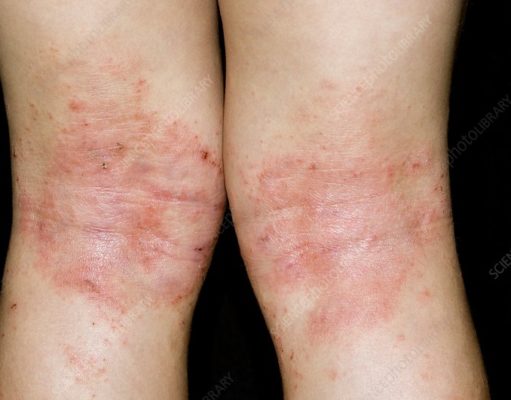
Eczema also referred as atopic dermatitis is a chronic skin disease that includes itchy and scaly rashes. The skin condition occurs as a result of a reaction in hypersensitive skin that leads to enduring redness and swelling in the skin surface. People suffering from eczema have deficiency of some proteins that leads to hypersensitivity.
Some of the types of eczema include:
- Contact dermatitis
This form of eczema causes due to direct contact with any of the allergens or irritants. Some of the common irritants are skin soaps, laundry soap as well as detergents. Some of the possible allergens comprise rubber; metals, like nickel; perfume; jewelry; cosmetics; weeds and so on. But it takes long time and too much of contact with an irritant to cause dermatitis as compared to an allergen. If you are sensitive to allergens then even a small exposure can cause eczema. Once you develop this sensitivity, you will have it for life.
- Neurodermatitis:
Neurodermatitis mainly forms due to an itchy sensation created in your skin thereby leading to irritation that can force you to scratch or rub that particular skin part repeatedly. Some of the commonly affected body parts include wrist, ankles, arm, and outer forearm as well as back of the neck. This form of eczema can be associated with various other skin conditions, including dry skin and psoriasis.
- Seborrheic dermatitis:
This eczema type leads to red rashes along with yellowish type oily scales that are mainly developed on the scalp. Seborrheic dermatitis is generally noticed in people with oily hair and skin also it comes and goes according to the varying seasons. However, you may also notice their occurrence when you go through physical stress or are traveling. Also, people have neurological problems, Parkinson’s disease get this form of dermatitis. It can also be seen in infants and is referred to as cradle cap.
- Stasis dermatitis:
Stasis dermatitis develops mainly when fluids build up under skin’s tissues mainly in the parts of lower leg. This accumulated fluid obstructs the blood’s capacity to nourish skin and puts additional pressure on the skin. Varicose veins and some other persistent conditions affect blood circulation in legs leading to accumulation of fluid.
The easiest way to prevent contact dermatitis is by avoiding contact with the substances causing allergy, such as harsh soaps or poison ivy. Hence, it is essential to identify and avoid allergens that trigger inflammation. Speedy changes in temperature, stress and sweating worsens some types of eczema. Also, try to stay away from wool products, including bedding, rugs and clothes along with some harsh detergents and soaps. Avoid skin dryness as it will be one of the important factors in preventing future bouts.
Homeopathy treatment for Eczema is effective in treating and managing the condition. Fix an appointment with an expert homeopath to seek consultancy.








